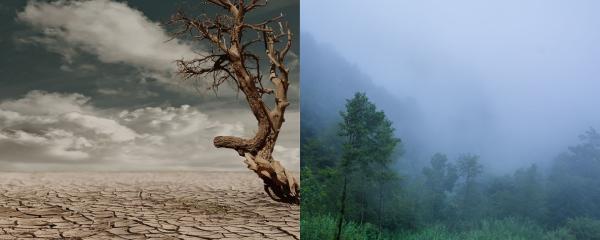
IIT Palakkad study shows how different indices used to predict drought combined with effects fof climate change can lead to different climate predictions for the future

IIT Palakkad study shows how different indices used to predict drought combined with effects fof climate change can lead to different climate predictions for the future
Nature is full of mind boggling interactions, some that seem they are straight out of a fiction novel! Studying a host-parasite-hyperparasite interaction between a species of moth and two species of wasp, scientists from the Ecology lab at the Department of Animal Science, Central University of Kerala, explore how wasps control the behaviour of moth larvae and also contribute to controlling their population.

The word “drug” is a taboo in the society. People shun the so-called drug users and abusers. However, little do they know that they themselves are consuming a drug on a daily basis! Befuddled?
“Mom, can I have a cup of coffee?”
YES! Coffee! Or more specifically, caffeine.
There are plenty of activities we as humans perform each day, which requires incredible amount of coordination between the different parts of our body. A simple act of lifting a book requires, first your eye to pin-point the book, next it guides your hand to clasp the book and then lift it up. Sounds complicated. Yet, each day, we can lift things up, catch fast moving objects, and ride very fast on the bike, hardly noticing what our hands our doing, while swerving through the traffic.
‘Riboswitches’ like the name suggests are like on and off switches for genes. These are present in all living things, from the smallest bacteria to the largest trees. Scientists from the Indian Institute of Science Education and Research, Kolkata have sequences the genomes of 2785 bacteria to understand their function and origin.
Elephant Endotheliotropic Herpesviruses (EEHVs), is a highly widespread herpes virus commonly found in Asian and African elephants. Of the 130 types of herpes viruses found worldwide, only some are known to infect humans, yet 90% of the human population is infected with some form of herpes virus. The rest can infect organisms as diverse as cats, birds, horses and fish.
The human body is made up of a complex network of cells and tissues specialized to carry out specific tasks. Studying each type of cell individually gives researchers insights into treating diseases and disorders. The cells of a human heart have very poor regenerative capability, while those of zebrafish are known to regenerate well. Scientists from the Agharkar Research Institute, Pune in their recent study explore the mechanism behind how zerbafish hearts regenerate.
Nature has an incredibly diverse array of life-hacks that can help us better solve various problems. Interesting phenomenon and natural resources can be abounding in even the most unexpected corners. One such unexpected location are the various hot water springs of Himalayas. Thriving with microbial life which can survive temperatures as high as 90˚C, these hot water springs are a treasure trove of exotic thermos-tolerant microbial enzymes which have a wide array of applications.
India produces a large amount of agricultural products due to its fertile soil and dependable rainfall patterns. Any harm to the soil would affect the lives of millions in the country. Soil erosion due to rainfall is one such threat. In an first of its kind study an international team of scientists have designed a global map of soil erosivity to devise mechanisms to protect our soils from erosion due to rainfall.
We live in a world where day to day objects seems to be getting smaller and better. The advent of nanotechnology is a major contributing factor to this phenomenon. Defined as the “engineered construction of matter at the molecular level”, nanotechnology has applications and uses in a multitude of fields. From medicine, electronics, food, clothing, batteries and environment, nanotechnology seems to be pushing the limits of all these fields. Now, scientist have discovered yet another novel application of nanotechnology – facilitating soil microbial growth.
Although Solar energy has been often hailed as a green source of energy, shortcomings in conventional silicon based solar cells and the environmental damage caused during mining and manufacturing of such cells raises questions on the green nature of the energy. In a breakthrough, scientists have developed organic solar cells, developed from indigenously developed discotic liquid crystal, that could provide an alternative.